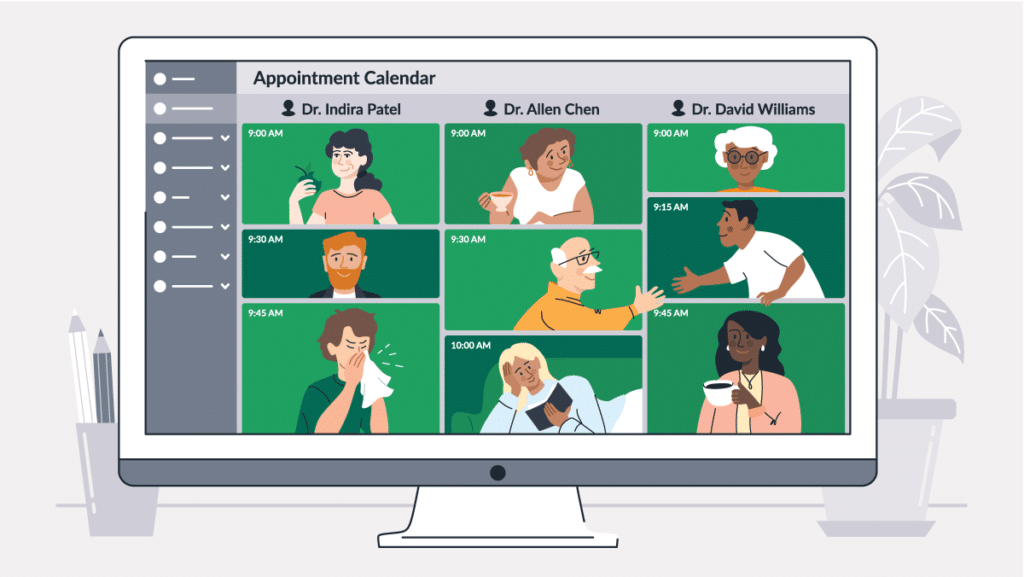This is a guest post written by June Hannan.
Staff retention is a big challenge for medical practices today. With clinics increasing in size and efficiency, and technology playing a greater role in the general day to day running of practices, staff are becoming increasingly likely to feel overwhelmed and undervalued.
Research by PwC on employee turnover identified “Australia as last amongst 11 developed countries at 23% for staff turnover within 12 months”. This means by this time next year, one in four of your staff members are likely to have disappeared.
But who said you have to be a statistic? There are ways to step outside the trend and build a practice that truly cares about its staff. A practice that not only retains outstanding talent, but attracts it too. Here are my 10 ways to do it.
1. Be as flexible as possible
As efficiency becomes increasingly important to all of us, so too does time. No longer are staff prepared to put in the long hours week after week. Neither are they prepared to work for businesses who are inflexible around taking time off.
If you want your staff to turn up every day fresh and excited, consider giving them the opportunity to get away from the practice from time to time. For example, you might give them a day (or half a day) off to do Christmas shopping or to celebrate their birthday, or you might offer flexible working hours to those who need to drop off and pick up the kids from school.
This is obviously difficult at times for small practices, but it is not impossible. It is better to have staff around a little less, but happy and engaged, than to have staff around all day everyday who are burned out and visiting seek.com.au on their lunch break.
2. Avoid ‘Groundhog Day’
The fastest way to demotivate your team is to force them to live out the same working day over and over. To keep staff fresh, let them experience something different from time to time. This might means allowing them to shadow someone else for half a day each fortnight, or it might involve the 80/20 rule where staff can choose their own tasks 20% of the time.
Again, this may sound impossible with so much to get done in a practice, but it can work. More often than not, your clinics best ideas come about when people have time to proactively think about new ideas rather than reacting to the continual flow of day to day tasks. Who knows, one idea might substantially boost the overall productivity of your entire practice.
3. Thank your staff daily
This sounds easy but it isn’t. Saying thank you doesn’t just mean muttering the words. It means finding one thing you genuinely appreciate each staff member doing that day and saying ‘thank you’ for that specific thing. A thank you goes an enormous way to showing staff that you didn’t just value them on Monday, or last Thursday, but that you value them everyday, even when things go wrong.
4. Use your employee’s names
Have you ever spent time with someone who used your name over and over in a conversation? At first it feels a little odd, but after some time you can’t help but feel that the person is here with you. They are engaged and showing that they truly care. This is how your staff feel every time you use their name. They feel special because they can see that you’re not just talking for the sake of talking, but that you’re actually talking to them. Try it. I think you’ll be surprised.
5. Encourage independent thinking
Perhaps, we once considered independent thinkers a threat to our practice because they pulled our processes into question and we were never sure if next week they would hand in their resignation and tell us they were off to start their own thing. This is not the case anymore. Having a team of independent thinkers is the keystone to running a successful practice. Independent thinkers encourage clinics to be innovative and they draw in other independent thinkers who also help to better your practice.
But how do you encourage independent thinking? Well, firstly you should grant staff members permission to take risks and not punish them when these risks go pear-shaped (assuming everyone has learned a valuable lesson).
Secondly, you can create a forum, whether it be online or in person, where staff can share new ideas about improving the systems at your clinic. For those ideas you like, give those who came up with the idea an opportunity to bring the idea to life. And, of course, you want to give appreciation and credit to those who are pushing the barriers.
6. Build a community
Building a community means getting to know your staff, and enabling them to get to know one another, through non-work related conversations and activities. This means not just waiting for the Christmas party to get together, but instead organising an ongoing series of social events.
These don’t have to be big parties involving bar tabs and dancing. It could be as simple as finishing 30mins early one day a week or a fortnight where the team can sit down together over a coffee or tea to chat about things outside of work and to get to know one another better.
Building a community also means getting out of the practice from time to time as a team. This might mean participating in a social event, such as a fun run, or attending a charity event together.
7. Offer education and training opportunities
We all need to feel like we are moving forward and growing in order to feel content. It is a part of what it means to be human. This is why providing staff with education and training opportunities can have an enormous impact on staff retention.
This might mean encouraging staff to do an extracurricular course through an RTO and paying for the time they spend at the course. Or, if the course takes place after hours, your practice could pay for the course itself. An example is the new Certificate IV in Medical Practice Assisting that enables medical receptionists to support nurses and doctors in the delivery of care to clients.
If this isn’t feasible you could also consider setting aside a small yearly budget, which staff can use to attend conferences and seminars. Costs like these quickly pay for themselves as staff return each time with a higher level of skills.
8. Highlight opportunities for career growth
As well as providing staff with training opportunities it is also important to frequently remind them about the opportunities for career growth specifically available to them. This gives them something to work towards.
A good tip is to ask them where they see themselves in a year or two when they first come onboard. Then write this down somewhere and keep it in mind when conducting their performance review 6 or 12-months down the track. This shows your staff that you are aware and supportive of their goals, which is an enormous incentive for them to stick around.
9. Be a genuine mentor
You’ve heard this before I know, but it is important. Staff don’t want managers anymore. They want mentors. People who don’t just tell them what to do, but who teach and lead by example. For example, if you tell your staff not to answer their mobile during work hours then make sure you don’t do it yourself.
The same is true if you tell them not to eat at their desk, or to maintain a high level of presentation. You must hold yourself to the same standards in order to earn your team’s respect. After all, if your staff can’t respect you, how can you expect them to follow you?
10. Update your technology
Old technology is not only slow, but it can be severely frustrating. Too often clinics lose their best people because those individuals get tired of being stuck in a time warp. They no longer want to fight others for new technology, or to wait for the page to load for the tenth time in a day. They want fast equipment they can call their own. Equipment that ironically, not only encourages them to stay around longer, but also improves the efficiency of your practice.



